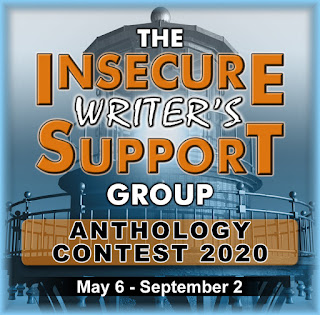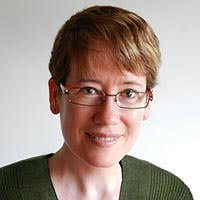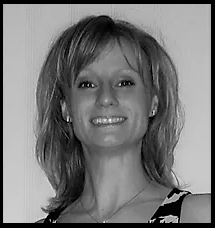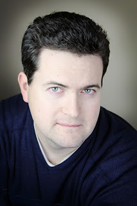First, a bit about me. I started my adult life as an archaeologist and worked in the United States, Europe, and the Middle East for ten years before deciding to switch to writing. Of course, I couldn’t make the transition overnight. It was a slow process of building up my portfolio while keeping my day job. Then I got a degree in journalism and writing became my day job. I worked at various newspaper and editing positions before striking out as a full-time freelancer.
Now, twenty years later, I’ve written or ghostwritten more than 50 books, plus thousands of paid blog posts and articles. While making it as a writer is never easy, a few simple tips will help you on your way.
Start Small and Familiar
When I first got started, I pitched history and archaeology articles, using my professional credentials to get in the door. Many of these markets were on the small side. You won’t hit the big leagues with your first publication. Examine your expertise and background and figure out how to market them.
Write Every Day, And Write A Lot
Freelance writers are paid by the article or word. Thus it stands to reason that the more you write, the more you get paid. If you’re submitting articles and books on spec, the more prolific you are, the better your chances of getting hired.
The best writing advice I ever got came when I was still a complete novice. I went to a writing conference where a successful mystery author shared this gem: “If you write a page a day, by the end of the year you’ll have a book.” My first reaction was, “What if I write two pages a day?”
I got to work. Within a year I had my first two book contracts.
Most financially successful authors (as opposed to literary prizewinners who teach for a living) have one thing in common—they are hardworking and prolific. I studied the careers of a dozen of these writers in my book Writing Secrets of the World’s Most Prolific Authors.
It was an eye-opening project. All these writers had written more than 300 books. The great Isaac Asimov almost didn’t make the cut, being the least productive writer I covered. Besides having a strong work ethic and incredible focus while still making sure to take care of themselves mentally and physically, they also knew contract law and worked in a variety of genres often under a variety of pen names. Plus they wrote in a clear, accessible style that attracted readers.
They also recognized one important fact—writer’s block is a myth. As famous Western writer Chet Cunningham put it, “Ever heard of a carpenter not going to work because he has ‘carpenter’s block’? If a writer can’t write, it’s because he doesn’t really want to, he isn’t ready to get it on paper, or he’s just plain lazy.”
Avoid Amateurism
First off, don’t write for free. If a market offers “exposure” but can’t afford to pay its authors, how much are they going to put into marketing? Beginning writers often lack self-confidence and get taken advantage of. If your work is good enough to be published, it’s good enough to pay for.
Also, don’t spend too much time on writing groups filled with other beginners. While they can be fun and supportive, they can also be filled with petty squabbles and bad information. If you must chat online with a community of writers, seek out a community that is achieving more than you are. That will help you level up.
Go Where the Money Is
Be constantly on the lookout for better and more promising markets. For several years I worked as a travel blogger for Gadling.com. They paid me to travel and write. Heaven! I sensed, however, that it was too good to last, so I started doing side gigs on Elance (now Upwork). I began with my original strength—rewriting a client’s archaeology dissertation as a popular level book. Then I got into ghostwriting novels, using my indie published novels as a CV. When the bottom fell out of the blogging market and Gadling folded, I was able to leap into ghostwriting to replace that income. In fact, I ended up earning much more. Sadly, I have to pay for my own plane tickets these days!
The key here is to diversify. Never rely on only one source of income. While Upwork is my biggest moneymaker these days, I work hard to sell my indie titles, and also do magazine articles and history booklets for extra income.
Always Be On the Lookout
The world is full of opportunities, and they go to those bold enough to ask for them.
 In her memoir No Lady with a Pen, Ursula Bloom, a bestselling author of the early 20th century, wrote about how one early collaborator gave her a tip that she took to heart. “‘For every editor you meet, you ought to get an introduction to another one. That’s important.’ I followed his advice faithfully. I’ve met too many people who ask for advice and then push it aside because it isn’t the kind they fancy for themselves.”
In her memoir No Lady with a Pen, Ursula Bloom, a bestselling author of the early 20th century, wrote about how one early collaborator gave her a tip that she took to heart. “‘For every editor you meet, you ought to get an introduction to another one. That’s important.’ I followed his advice faithfully. I’ve met too many people who ask for advice and then push it aside because it isn’t the kind they fancy for themselves.” Be open to good advice, be ready to take on new things, and be willing to work hard. That’s all you need. Good luck!
Want to know more about me and my work? Feel free to check out these links:
Amazon Author Page, The Productive Writer YouTube Channel, Facebook Author Page, The Midlist Writer Blog, and Instagram














